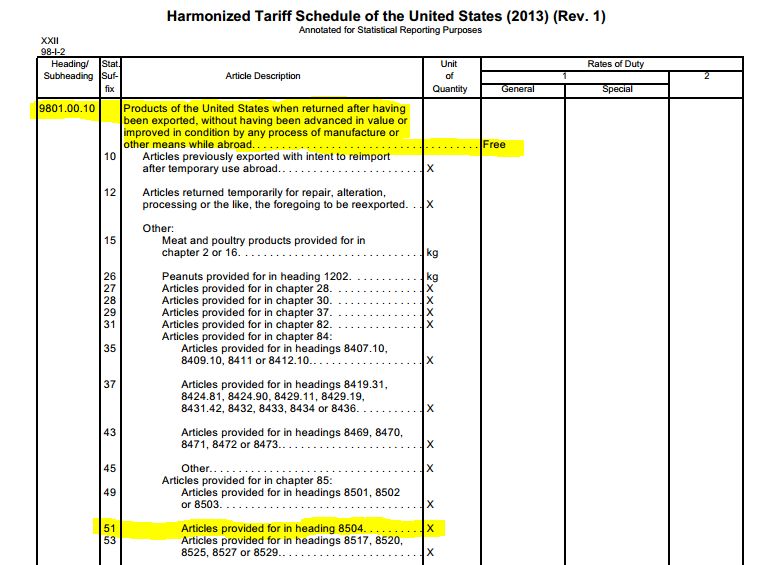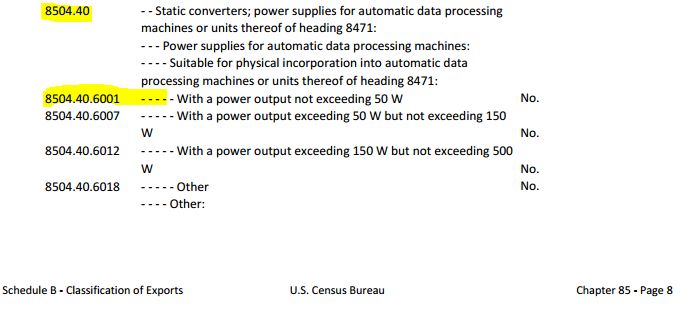Do You Need to Put Sizing on Again When Replacing a Border
Do you know how to correctly prepare your shipment paperwork to avoid customs duties and taxes when, and where possible when making a repair and replace or warranty replacement shipment?
Have you or your customers ever been surprised by an unexpected bill for customs duties and taxes? Confusion sets in. You thought the shipments were items in need of repair or calibration, or maybe they were warranty items, or just being returned because they were the wrong parts. Hundreds of companies around the world are faced with this dilemma each day.
What may be surprising to hear is that most of these situations are preventable. All it takes is the knowledge to correctly prepare your shipment's paperwork.
In this article, we discuss the key mistakes leading to this issue, and explain how you can correct these mistakes with the proper knowledge.
It's important to state here, that it is a common misconception that all shipments involving returns are always duty and tax free. They are not.
To begin, lets deconstructing the essential elements. We need to separate the shipments in to two types: those that are exported out of the U.S., and those that are imported into the U.S. It's important to do this in order to bring attention to the first mistake many companies make — the paperwork (which includes the air waybill, and commercial or Performa invoice) are being completed in the same way regardless of the reasons the shipment exist. This behavior is at the root of the problem. Export and Import shipment paperwork are not the same!
To prepare shipment paperwork correctly one must always take into consideration the FIVE KEY ELEMENTS that Customs officials use to determine if they will allow a shipment to enter their country, and at what rates of duty and tax.
What are the FIVE KEY ELEMENTS?
1. REASON FOR IMPORT / INTENDED USE — this is often one of the most overlooked considerations, and it can have a huge impact on the outcome. The more the customs officials can ascertain from your paperwork the better.
2. ACCURATE DESCRIPTION OF THE COMMODITY — an accurate description is very important. Stay away from general terms when describing your commodity. Part numbers don't mean anything to Customs agents; the space they take up is better served with an accurate description.
3. VALUE OF THE COMMODITY — More often than not, there is confusion about the value of the commodity. Many shippers gravitate toward either end of the spectrum. On one end, "it's a return, so the value is zero, isn't it?" While on the opposite end, "We paid $X amount when we bought the thing, so I guess that's the value?" Both of these extremes are incorrect for this type of shipment.
4. HTS CODE USED — which HTS code you use is incredibly important! For many shippers, they're not concerned much about the HTS codes unless they also had to file an EEI with AES. The proper HTS code should be provided by the shipper on all shipments. It's extremely important for the type of shipment we're discussing.
The HTS code, put simply, is an internationally accepted system of numbers that match up to a specific commodity description, so that customs officials around the world can know what the commodity is regardless of the language spoken. The HTS code for shipments exported from the U.S. is also referred to as the Schedule "B" number.
Various countries around the world may add variations to the HTS codes from time to time, but only for their specific country. The U.S. is no exception. Currently all U.S. Imports are cleared using a special addition to the HTS codes called the H.T.S.U.S. (Harmonized Tariff Schedule of the United States).
Again, we illustrate that export and import shipment paperwork cannot be prepared the exact same way. If the shipment will be Exported from the U.S. then the shipper should use the proper HTS code, also known as the Schedule "B" number.
In the case of an Import coming to the U.S., the shipper is to use the correct H.T.S.U.S. code, which is used by U.S. Customs to clear all imports.
5. COUNTRY OF ORIGIN — Last, but not least, is knowing the Country of Origin, also known as the COUNTRY OF MANUFACTURE. It is used by customs officials to determine where the commodity was made.
Why is this important? Around the world, there are many trading alliances between countries. These trading alliances are also called things like Trade Agreements (such as USMCA), or Preferences (such as the GSP or "General System of Preferences") . Some of you may have also heard of alliances such as MFN (Most Favored Nations), or Developing Countries.
Under the authority of trade agreements, participating countries have agreed to make certain concessions on duty and taxes levied on commodities made in other participating countries. This is also true for the shipment type we are discussing. The concessions made by customs under the trade agreements will vary widely; ranging from duty-free to lower rates of duty.
Now that you have been given more insight into what makes customs officials tick, you know to ALWAYS consider the FIVE KEY ELEMENTS. Lets bring it all together with some practical examples.
In these examples you'll find helpful directions, and as always we're here to help.
Example 1 – Export Commercial Invoice
Example 2 – Export DHL Air waybill
Example 3 – Import Commercial Invoice
Example 4 – Import DHL Air waybill
Examples
In these examples, please assume that you are the manufacturer and you are located in the US.
International Customer returning item to you for repair/replacement
Let's say the shipper in Germany is your customer and is returning an item for repair or replacement. You are the US manufacturer. The Commercial Invoice and Air waybill should use the HTS Code of 9801.00.10XX. The "XX" will depend on the actual HTS Code of the item being returned. The screenshot below is an example of the HTSUS Code. Visit the HTSUS and use the appropriate suffix in chapter 98. The invoice should state the item being returned and state that it is returning for repair (for example: power supply board; returning for repair). The value should be listed as what it would cost to replace the item if it were lost. Always mark these kinds of shipments as DAP, meaning the receiver pays any duties or taxes. If you select DDP, some countries will not clear the shipment as a repair/return or something entering the country temporarily or returning to the country.

Now let us say you are done with the repair and you are returning the item back to your customer in Germany. The HTS Code used for items returning to the customer should be the correct HTS or Schedule B number for exports. In the description of the product, state that the shipment is a repaired item returning to the buyer (for example: power supply board; repaired item returning to buyer). The value should be the cost of the repair, or if opting for shipment insurance the value should be the replacement cost of the product (not a sale price) and the cost of the repair.
You are returning an item to an international manufacturer for repair.
In this situation, you are returning an item to the manufacturer in another country for repair/return. Unlike the US, most other countries don't have a special HTS Code for products of the United States repairs/returns. So, mark the waybill with the actual HTS Code of the product using the HTS or Schedule B number for exports and state the item is returning for repair/replacement (for example: power supply board; returning to manufacturer for repair). The value should be what it would cost to replace the item if it were lost. Indicate on the commercial invoice that the reason for export is temporary.
When the manufacturer is ready to return it to you, they need to use the HTS Code appropriate for the product being returned. The Invoice should state the item being returned and state that it is returning for repair (for example: power supply board; returning for repair). The value should be the cost of the repair. If opting for shipment insurance the value should be the replacement cost (not the sale price) and the cost of the repair. Always mark these kinds of shipments as DAP, meaning the receiver pays any duties or taxes. If you select DDP, some countries will not clear the shipment as a repair/return or something entering the country temporarily or returning back to the country.
About the Examples
Another word regarding the HTS codes (A.K.A. Schedule "B"), and the HTSUS codes. You understand how important it is to have the correct HTS or HTSUS code, but did you know that there is a special HTS/HTSUS code specifically structured to cover returns when the product is of the United States? Using this code where appropriate on the shipment's paperwork will further ensure that the correct level of duty and tax are assessed on your shipment. Visit the HTSUS.


U.S. Import — In this snip, let's say that the shipper in Germany is your customer, and is returning the PLC power supply board for repair or replacement. You are the U.S. manufacturer. You would have your customer in Germany use this H.T.S.U.S. code. This code is a special code specifically meant for returns. This will help ensure duty-free clearance.


U.S. Export — In this snip you're looking at the HTS codes (A.K.A. Schedule "B"). As in our export example, you're returning the PLC power supply board back to the manufacturer in Germany. You would use this HTS code to ensure that customs understands the commodity.


U.S. Export — This snip contains a special HTS code meant for returns that you can use if you are the U.S. manufacturer, and you're returning the PLC power supply board, after repairing or replacing it, back to your customer in Germany. This will help ensure the correct amount of duty is accessed at clearance.


Source: https://preferredship.com/kc/repair-replacement-warranty-returns/
0 Response to "Do You Need to Put Sizing on Again When Replacing a Border"
Post a Comment